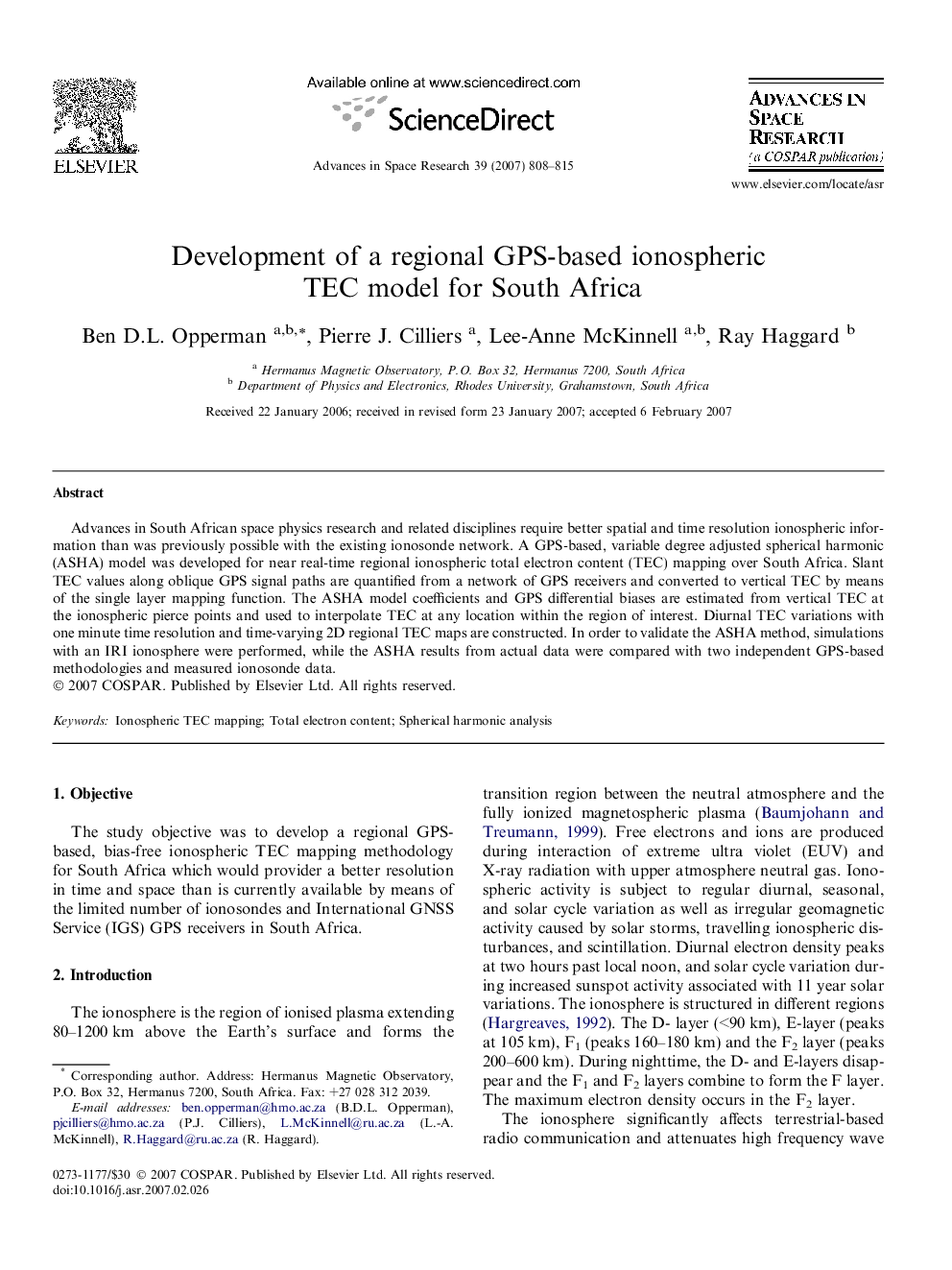| Article ID | Journal | Published Year | Pages | File Type |
|---|---|---|---|---|
| 1768373 | Advances in Space Research | 2007 | 8 Pages |
Advances in South African space physics research and related disciplines require better spatial and time resolution ionospheric information than was previously possible with the existing ionosonde network. A GPS-based, variable degree adjusted spherical harmonic (ASHA) model was developed for near real-time regional ionospheric total electron content (TEC) mapping over South Africa. Slant TEC values along oblique GPS signal paths are quantified from a network of GPS receivers and converted to vertical TEC by means of the single layer mapping function. The ASHA model coefficients and GPS differential biases are estimated from vertical TEC at the ionospheric pierce points and used to interpolate TEC at any location within the region of interest. Diurnal TEC variations with one minute time resolution and time-varying 2D regional TEC maps are constructed. In order to validate the ASHA method, simulations with an IRI ionosphere were performed, while the ASHA results from actual data were compared with two independent GPS-based methodologies and measured ionosonde data.
